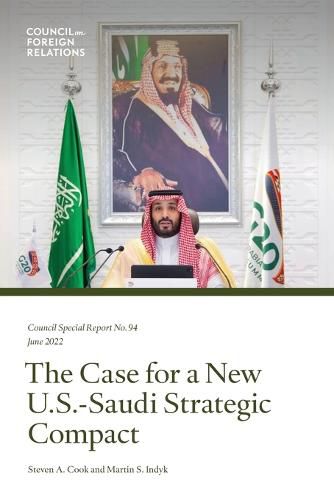Readings Newsletter
Become a Readings Member to make your shopping experience even easier.
Sign in or sign up for free!
You’re not far away from qualifying for FREE standard shipping within Australia
You’ve qualified for FREE standard shipping within Australia
The cart is loading…






The encounter between President Franklin D. Roosevelt and King Abdulaziz Al Saud aboard the USS Quincy in the Suez Canal on February 14, 1945, represents the launching point for relations between the United States and Saudi Arabia. From the start, it was an unlikely partnership. The deal that developed over time was straightforward. The United States needed unimpeded access to the vast reservoirs of oil beneath Al Saud’s desert sands, and Saudi Arabia needed protection from avaricious neighbors and great powers.
But in recent years, the U.S.-Saudi strategic partnership has frayed. The United States has grown frustrated with Saudi Arabia’s human rights record and reluctance to stabilize the oil market, while Riyadh has come to believe that Washington is no longer willing to guarantee the kingdom’s security.
With their new Council Special Report, The Case for a New U.S.-Saudi Strategic Compact, Eni Enrico Mattei Senior Fellow for Middle East and Africa Studies Steven A. Cook and Distinguished Fellow Martin S. Indyk give a thorough history of the special relationship between the world’s foremost democracy and the Middle East’s preeminent monarchy, and envision what a renewed partnership would look like.
As Cook and Indyk warn, Seventy-seven years after the original Roosevelt-Abdulaziz pact, the changing circumstances require a reassessment of the relationship’s value to each side, for if urgent action is not taken, the process of separation that is already under way is likely to accelerate, damaging the interests of both sides.
$9.00 standard shipping within Australia
FREE standard shipping within Australia for orders over $100.00
Express & International shipping calculated at checkout
The encounter between President Franklin D. Roosevelt and King Abdulaziz Al Saud aboard the USS Quincy in the Suez Canal on February 14, 1945, represents the launching point for relations between the United States and Saudi Arabia. From the start, it was an unlikely partnership. The deal that developed over time was straightforward. The United States needed unimpeded access to the vast reservoirs of oil beneath Al Saud’s desert sands, and Saudi Arabia needed protection from avaricious neighbors and great powers.
But in recent years, the U.S.-Saudi strategic partnership has frayed. The United States has grown frustrated with Saudi Arabia’s human rights record and reluctance to stabilize the oil market, while Riyadh has come to believe that Washington is no longer willing to guarantee the kingdom’s security.
With their new Council Special Report, The Case for a New U.S.-Saudi Strategic Compact, Eni Enrico Mattei Senior Fellow for Middle East and Africa Studies Steven A. Cook and Distinguished Fellow Martin S. Indyk give a thorough history of the special relationship between the world’s foremost democracy and the Middle East’s preeminent monarchy, and envision what a renewed partnership would look like.
As Cook and Indyk warn, Seventy-seven years after the original Roosevelt-Abdulaziz pact, the changing circumstances require a reassessment of the relationship’s value to each side, for if urgent action is not taken, the process of separation that is already under way is likely to accelerate, damaging the interests of both sides.